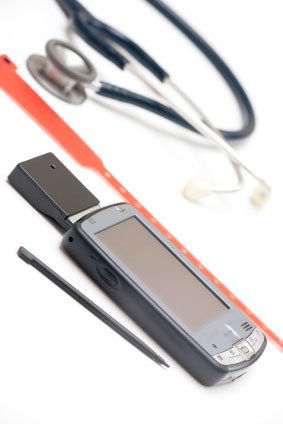Medical alert monitoring systems come in many forms. Typically, these personal emergency response systems (PERS) include emergency wireless medical buttons in the form of a pendant, wrist-watch, or belt-clip. They also feature two-way voice communication with the medical alert monitoring company, inactivity monitoring, and pill reminders.
Telemedicine or telehealth systems are an advanced extension of a typical medical alert monitoring system. They can transfer medical information right from your loved one’s home to a doctor at a remote location. Tests can include blood pressure, glucose, oxygen saturation, and patient weight, to name a few. The doctor can have immediate notification of these results and can act accordingly. Certainly patients and caregivers can benefit from these convenient in-home tests, but for patients in rural areas, these systems can provide a vital link to remote physicians and specialists.
One leading manufacturer in the production of these systems is a company called Visonic, who produces the Amber Health & Safety Support Solution. It is comprised of three systems: AmberBasic, AmberClassic, and AmberSelect.
AmberBasic
AmberBasic is much like the typical medical alert monitoring systems available from most top providers. It includes features that are suited for most medical alert users today. It has features like wireless emergency medical buttons, two-way voice speakerphone to the monitoring station, and inactivity monitoirng.
AmberClassic
AmberClassic includes all of the AmberBasic features, but also adds features like carbon monoxide, smoke, flood, and security monitoring. Fall detection and advanced inactivity monitoring options are also available.
AmberSelect
AmberSelect is the Cadillac of the Amber product line. Building upon the feature set of AmberBasic and AmberClassic, AmberSelect adds the telemedicine and telehealth features we discussed earlier. With this advanced system, lifestyle, safety management, and telehealth status are all monitored with this one, high-end solution.
With costs of telehealth and telemedicine systems reaching $100.00 per month in monitoirng services, they are not for everyone. That being said, it would still be much less expensive than full-time care by a professional. You would also need to find a doctor that is willing to work with this technology and receive the data that these systems can send out.
Remember, technology can only do so much. There is a point where human face-to-face contact is best. As this technology evolves, we may see more of these products on the mainstream market. It is estimated that by the year 2050, for the first time in history, older persons will out number younger persons, under 60 years old. The need for this technology will most likely increase.



